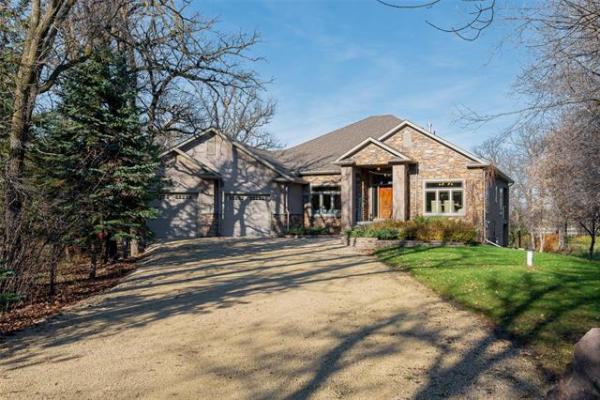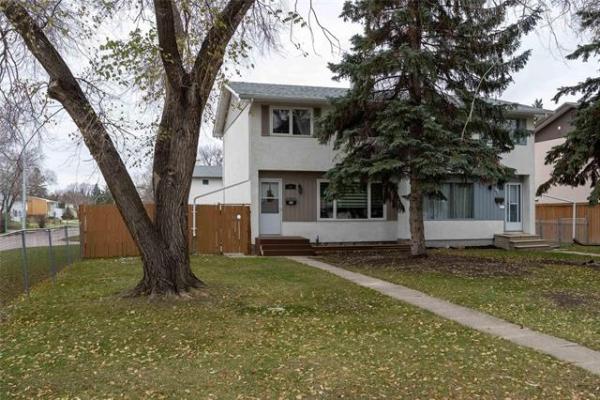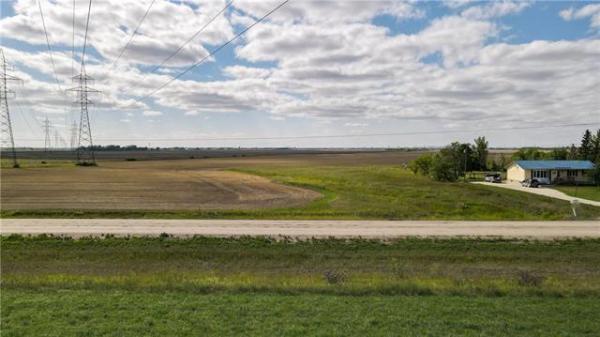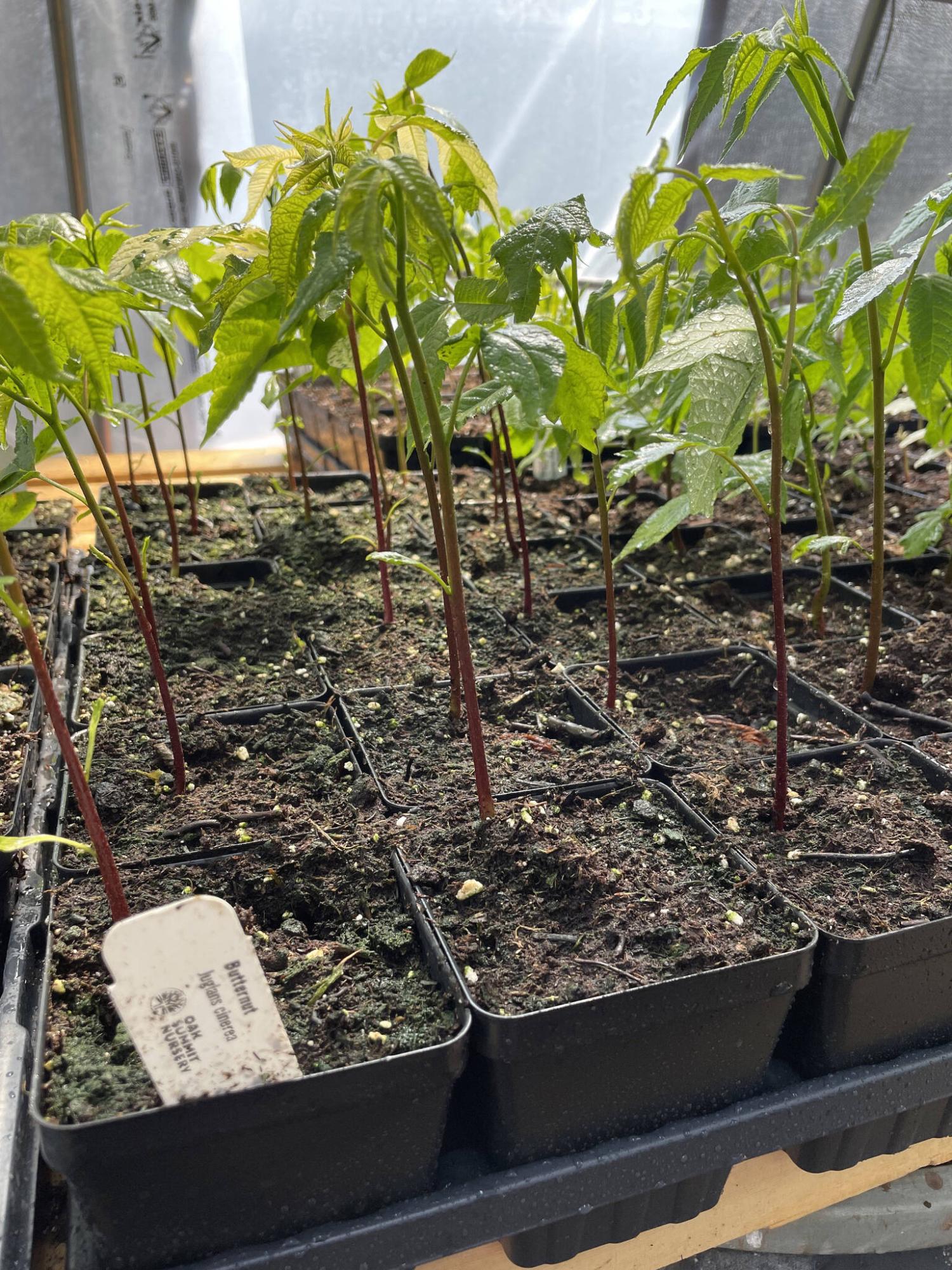
Oak Summit Nursery photo
These one-year-old butternut seedlings will grow into larger trees that produce edible nuts with a creamy, buttery taste.
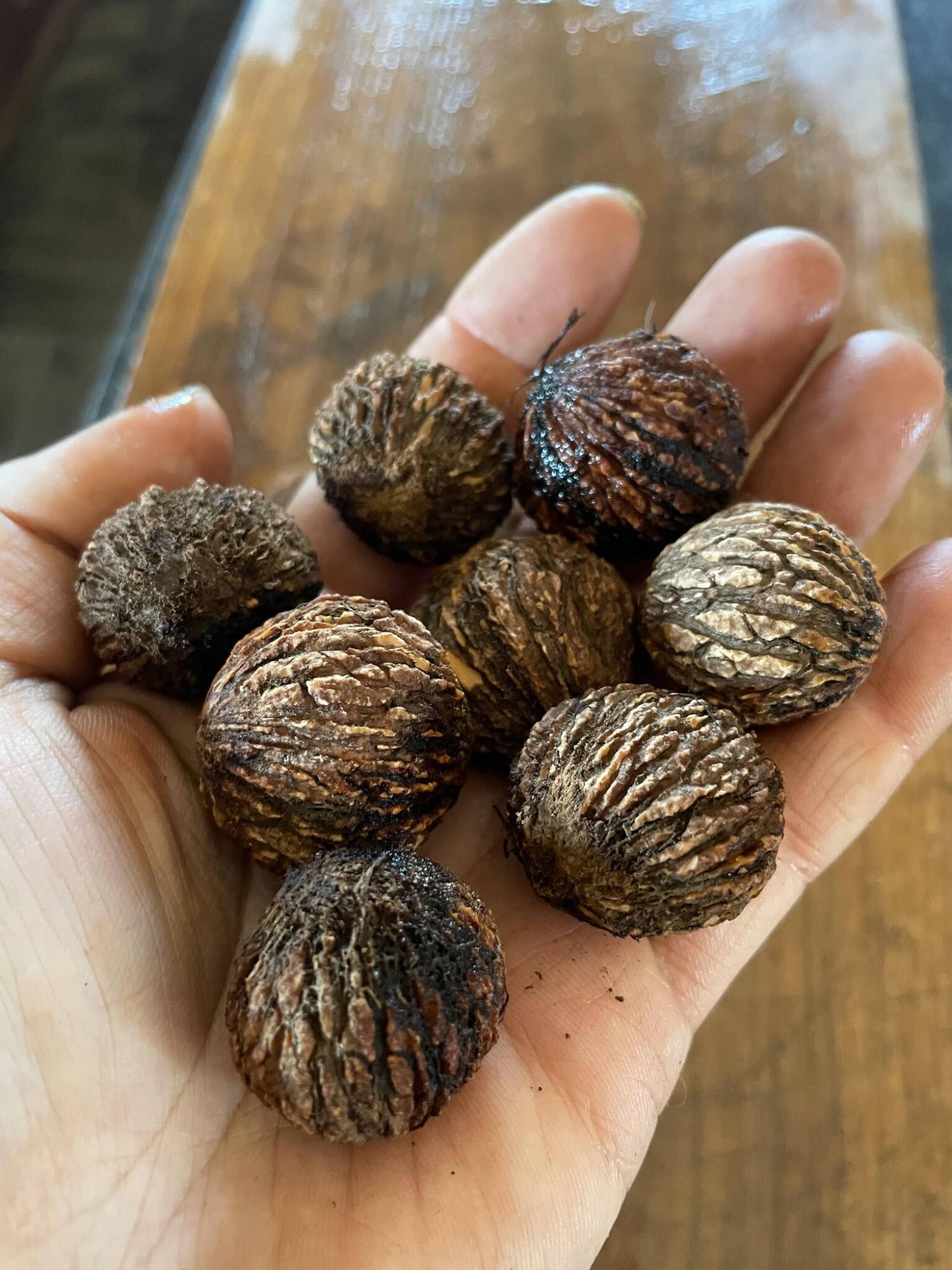
Oak Summit Nursery photo
Oak Summit Nursery sells nuts from the Manitoba black walnut for planting — eight to a bag.
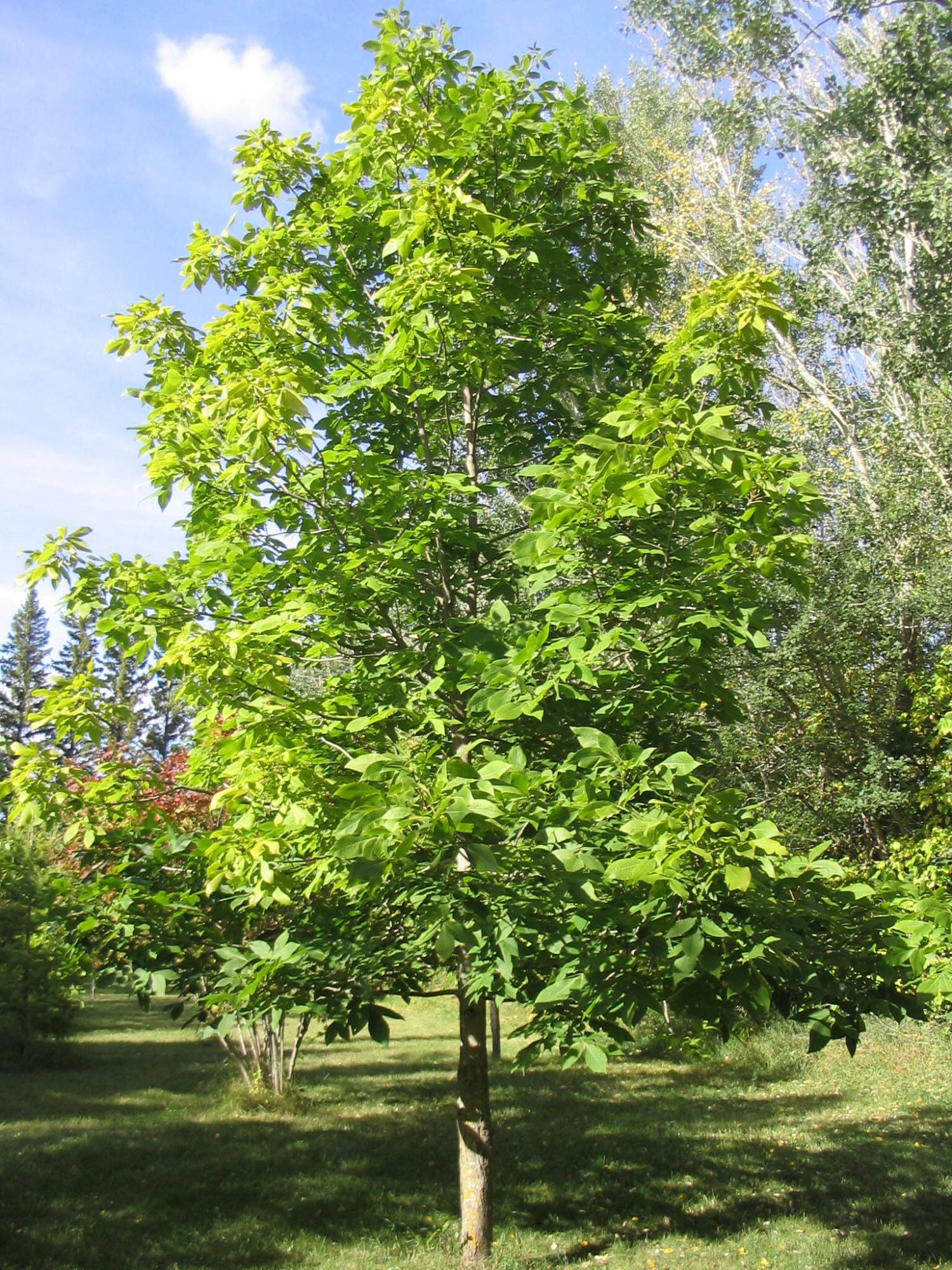
Rick Durand photo
There are beautiful specimens of shagbark hickory — quite a unique nut tree — growing near Portage la Prairie.
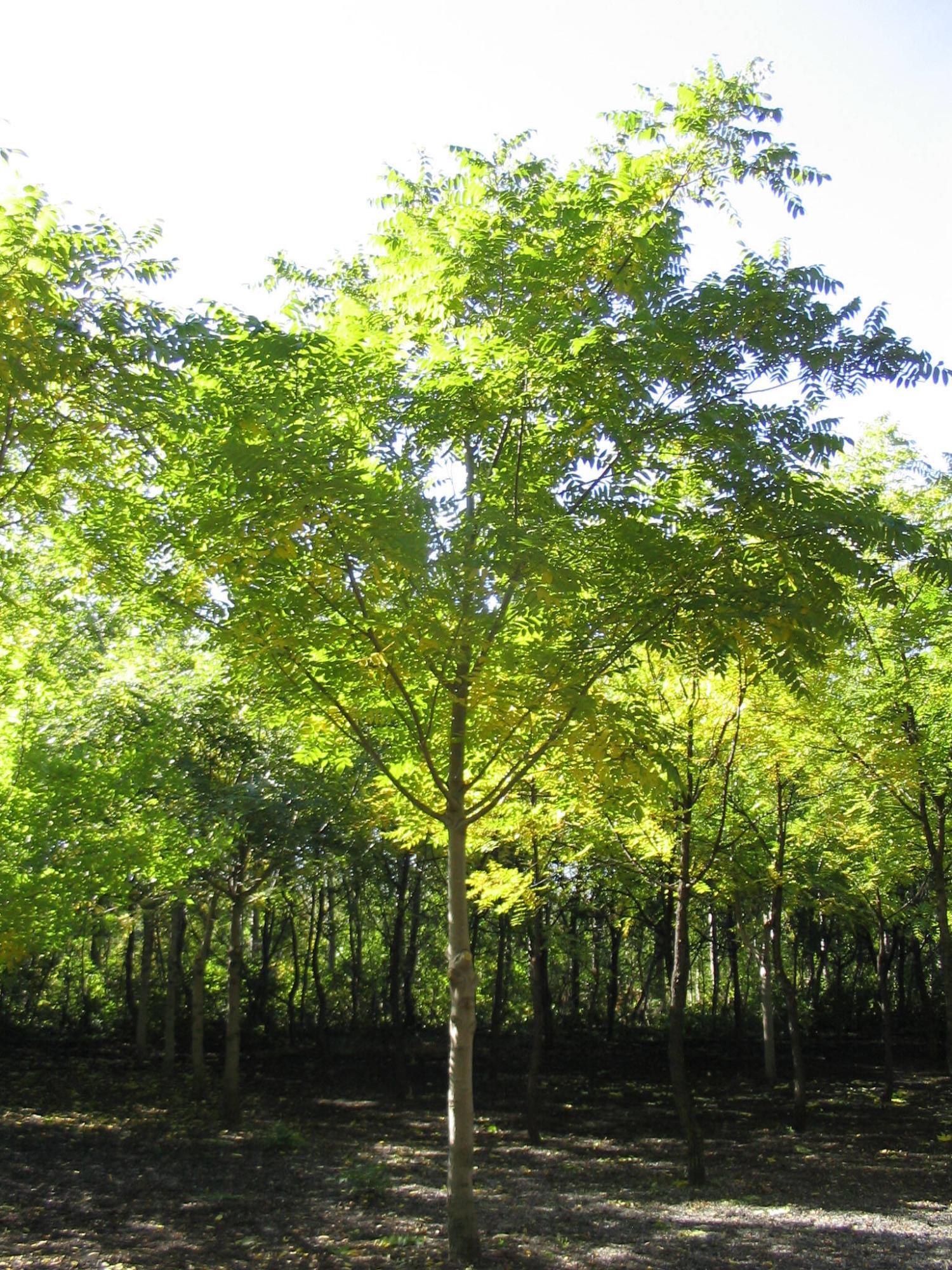
Rick Durand photo
Butternut trees are the hardiest of the walnut species growing on the Prairies.
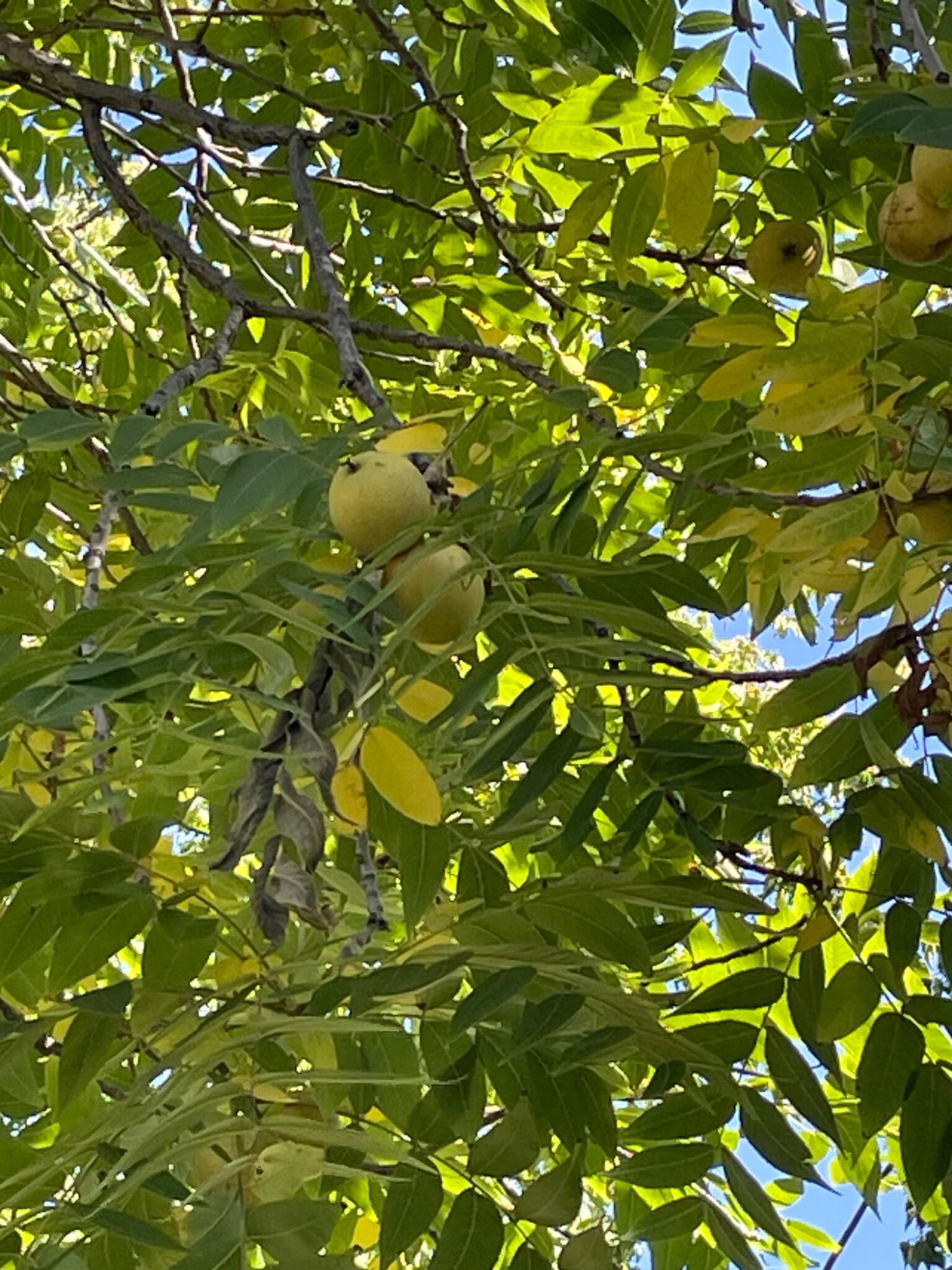
Oak Summit Nursery photo
Ripe nuts on a Manitoba black walnut tree produce a citrusy fragrance.
If you’re thinking about planting a tree, why not consider a nut tree?
Nut trees promote urban plant diversity and provide food and shelter for wildlife. There are nut trees with unique ornamental attributes as well as edible qualities ideal for a backyard food garden. You can choose from cultivars of nut trees you can find at your local garden centre, or you can grow your own from local seed collected by a specialty mail- order nursery right here in Manitoba.
Nut trees are an esthetically pleasing addition to both urban and rural environments, says Rick Durand, a well-known Prairie tree researcher. According to Durand, the most common nut tree on the Prairies is the bur oak, and it’s becoming a staple for any urban tree-planting program. “In the past, elm and ash trees were the dominant choice for an urban shade tree,” he says, “but insect and disease pressures that have resulted in the loss of many elm and ash trees underscore the critical need to diversify the urban forest.”
Bur oak is well adapted to the extreme temperature swings of a continental climate, says Durand, as well as to the high pH of alkaline soils and shifts from drought to flood conditions. “Bur oak cultivars well suited to the Prairie climate are Top Gun, Bolt and Sentry. All three have very controlled crown forms that can save a large amount of pruning costs for a municipality,” says Durand.
Top Gun bur oak is a hardy variety that was selected by Durand from a native oak stand in Manitoba. A narrow, upright selection ideal for smaller spaces, Top Gun produces few acorns.
Admiration hybrid oak is an introduction by Jeffries Nurseries, also in Portage la Prairie. It was found growing as a mature street tree in Saskatoon. Hardy to Zone 2, Admiration has unique shaggy bark and a pyramidal growth habit. “One advantage of planting an Admiration hybrid oak is urban tree diversification,” says Durand, “and another is that it has a higher resistance to native insects such as the oak leaf gall mite.”
Several years ago, Durand was determined to find out if there were any bur oak acorns that were edible. At the time he owned Prairie Shade Nursery near Portage la Prairie where he spent 30 years evaluating research plots of woody ornamental cultivars. “I collected acorns from every oak tree located on public land at Island Park in Portage and did an analysis,” says Durand.
“It was an interesting experience, seeing the difference in sizes and shapes of acorns, amount of tannins, thickness of the outer shell, percentage of the kernel compared to the outer shell, and of course, taste. I soaked all the acorns in water to reduce the tannins, but I came to the conclusion that I would consider eating bur oak acorns only if I was marooned on a desert island with just oak trees.”
There are tastier options, however.
Durand’s interest in edible nut trees peaked when he met retired navy engineer Fred Sanford, who practised permaculture and believed in the power of growing your own food. “Fred purchased a wide variety of nut trees and shrubs that he planted in his 2.8-hectare oasis located along the Assiniboine River near Portage,” says Durand. That was 40 years ago. “The nut trees still standing are bearing nuts that can be enjoyed as a snack or planted for future generations and represent Fred’s legacy as a pioneer edible-nut grower on the Prairies.”
Notable nut tree varieties among Sanford’s collection that have endured the harsh Prairie climate include shagbark hickory, heartnut, American beech and hybrid butternuts.
Thirty years ago, Durand planted 20 nuts from shagbark hickory trees that an American friend had sent to him. The nuts came from a plantation of thousands of nut trees that was going to be destroyed to make way for a housing development. “There are five shagbark hickory trees performing very well in the Portage la Prairie area,” says Durand. Shagbark hickory requires deep fertile soil and lots of protection from drying Prairie winds.”
The butternut (Juglans cinerea) is the hardiest of the walnut species growing on the Prairies, says Durand. It is also known as white walnut. “If you plant a butternut in an open area, it will take advantage of every square inch of its space and grow a broad, spreading crown. When you plant butternuts in a tighter situation, the tree will grow much taller and the branches will be more compact and smaller.” Butternuts have a creamy, smooth and buttery taste, says Durand.
“The black walnut (Juglans nigra) is a majestic tree with its dark-black bark and stately crown form. I have seen many examples of very healthy walnuts growing in Manitoba where the soil is deep and fertile, and there is adequate wind protection.” For best results, Durand says walnut trees require moist soil and high humidity.
Both the American hazelnut and beaked hazelnut are native to Manitoba. “The hazelnut is the Cinderella of nut producing plants and deserves much more attention than it receives,” says Durand. “Hazelnuts are very drought-tolerant and are suitable for tight spaces since they are smaller-profile trees and shrubs.”
Oak Summit Nursery, located just outside Brandon, is a craft-scale mail-order nursery specializing in cold-hardy nut (oaks, walnuts, butternut, hazelnut) and fruit plants. Choose from bare-root or one-year-old potted plants. Owner Doug McGregor is preparing to ship plants starting April 1. The deadline for orders is March 19.
McGregor is currently sold out of hazelnuts. “The forest on my 20-hectare property is filled with beaked and American hazelnut, so I will have more available,” says McGregor. “They don’t have large nuts, but they can grow in full shade and are prolific.”
Some of the walnut seedlings he is selling were grown from walnuts he collected from the stunning walnut tree growing in Greg Boguski’s garden in Brandon. McGregor has also obtained seeds from the orchard of walnut and butternut trees at the Baker Hutterite Colony near MacGregor, just west of Portage la Prairie.
“The nuts of black walnut have an amazing smell like a citrus fruit when you pick them up fresh,” says McGregor. Gloves are essential because the husks can irritate and stain your skin. “We husk the walnuts using a paint mixer and a tub of water. The husk comes off like the soft rind on a pomelo and the nut comes out.”
McGregor sells walnut and butternut seeds which come in bags of eight. Looking every bit like small works of nature’s art, the tree seeds must be refrigerated in damp peat moss because they need to cold-stratify. (A process that simulates natural conditions to enable germination.)
“You need to continue that process until May,” says McGregor. “Plant the seeds in a small pot. It can take a month or two before they germinate, but there is so much stored energy in that nut, it will shoot up to (30 centimetres) in a few of weeks.
“But with walnuts, you can even directly plant one or two nuts in a hole that is a few centimetres deep.”
colleenizacharias@gmail.com

